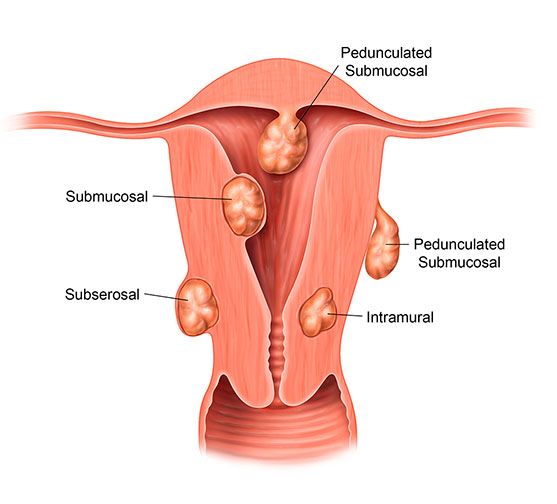
Genes that accelerate the growth of uterine muscle and abnormalities in uterine blood vessels may be involved in the cause of fibroids and how quickly they grow. The presence of estrogen and possibly progesterone is also a factor. Fibroids can’t grow without these natural female hormones, which is why symptoms often stop once a woman enters menopause.
It’s difficult to predict how big a fibroid will grow or what causes a fibroid to grow rapidly. They can increase to different sizes and at different speeds in each person. Some fibroids and their associated symptoms hardly change despite not having treatment. Other fibroids grow bigger with worsening symptoms over time. For others, symptoms may gradually go away on their own.
So, how big can fibroids grow? Size can range from smaller than a pea to larger than a melon. Most women with uterine fibroids have an enlarged uterus. In fact, a very large fibroid can expand the uterus to the size of a second-trimester pregnancy and press against the bowel or bladder, causing constipation or frequent urination.
Very large fibroids may cause the abdomen to swell to the point that it’s difficult for a doctor to conduct a thorough pelvic exam. Instead, women with large fibroids may choose to have an imaging study done to evaluate uterine fibroid size. Left unattended, very large fibroids can begin to degenerate or burst, even if they aren’t causing any symptoms.Degeneration occurs when the fibroid outgrows its blood supply, causing the cells of the fibroid to die. This typically causes abrupt, severe pain and tenderness.
There is no known treatment that prevents uterine fibroids, but you can take some precautionary steps that may slow their growth or minimize symptoms, such as adopting a fibroid-friendly diet. A study showed that women who consumed milk, cheese, ice cream, or other dairy products at least once a day were less likely to develop fibroids than women who consumed dairy less frequently. Another study showed that compounds from green tea inhibit the growth of fibroid cells and eventually increased the death rate of these cells.
Additionally, artificial hormones, such as those used in birth control pills, tend to slow fibroid growth.
If you’ve been diagnosed with fibroids, there are treatment options available depending on a number of factors, including the size, location and number of fibroids. There are minimally invasive alternatives to surgery, including uterine fibroid embolization. Of the conservative treatments for uterine fibroids, uterine fibroid embolization has the longest track record and has a significantly lower rate of major complications compared with surgery.
© 2025 vanshhospital.com. All Rights Reserved